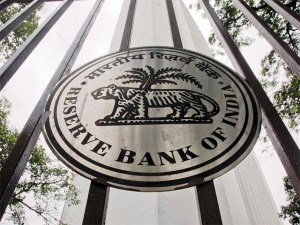According to a data released by the RBI shows that India’ banking system reported total deposits of Rs 100 lakh crore for the first time ever in September.
About Deposits,
Demand deposits crossing R10 lakh crore and time deposits crossing the Rs 90 lakh crore mark, the month saw the highest-ever monthly rise of Rs 5.32 lakh crore — more than the total deposits in the banking sector 20 years back.
- Although Rs 100 lakh crore is a big milestone, historical data reveal deposit growth slowed down considerably over the last five years. While banks’ deposits grew at a CAGR of 12.88% in the last five years, they had grown at a CAGR of 19.9% in the previous five years
- The slowing down in the pace of deposit growth was in line with the slowing down of M3 or broad money supply in the economy.

- An analysis of historical data suggests that while M3 in India grew at well over 20% (y-o-y) for several years in the middle of last decade, it has been growing in the sub-teens in recent years.
About Demand Deposits :
Demand deposits,bank money are funds held in demand deposit accounts in commercial banks. These account balances are usually considered money and form the greater part of the narrowly defined money supply of a country. Simply put, these would be funds like those held in a checking account.
- Demand deposits are usually considered part of the narrowly defined money supply, as they can be used, via checks and drafts, as a means of payment for goods and services and to settle debts.
- The money supply of a country is usually held to consist of currency plus demand deposits. In most countries, demand deposits account for a majority of the money supply.
- During times of financial crisis, bank customers will withdraw their funds in cash, leading to a drop in demand deposits and a shrinking of the money supply. Economists have speculated that this effect contributed to the severity of the Great Depression.
- This did not happen, however, in the financial crisis that began in 2008. In fact, demand deposits in the U.S. increased dramatically, from around $310bn in August 2008 to a peak of around $460bn in December 2008.
About Time Deposits,
A time deposit is a money deposit at a banking institution that cannot be withdrawn for a specific term or period of time. When the term is over it can be withdrawn or it can be held for another term. Generally speaking, the longer the term the better the yield on the money.
- In its strict sense, certificate deposit is different from that of time deposit in terms of its negotiability: CDs are negotiable and can be rediscounted when the holder needs some liquidity, while time deposits must be kept until maturity.
- The opposite, sometimes known as a sight deposit or “on call” deposit, can be withdrawn at any time, without any notice or penalty: e.g., money deposited in a checking account in a bank.
- The rate of return is higher than for savings accounts because the requirement that the deposit be held for a prespecified term gives the bank the ability to invest it in a higher-gain financial product class.
- However, the return on a time deposit is generally lower than the long-term average of that of investments in riskier products like stocks or bonds. Some banks offer market-linked time deposit accounts which offer potentially higher returns while guaranteeing principal.
- A time deposit is an interest-bearing bank deposit that has a specified date of maturity. A deposit of funds in a savings institution is made under an agreement stipulating that (a) the funds must be kept on deposit for a stated period of time, or (b) the institution may require a minimum period of notification before a withdrawal is made.






